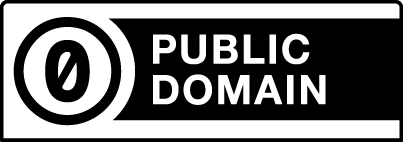 Southern Illinois University Carbondale
Southern Illinois University Carbondale
If you're looking through OER repositories for a work to use or remix, you've seen little black and white boxes or lines of text declaring the works are covered by something called Creative Commons (or CC) licenses. But what do those little notices mean exactly? This page will hopefully clear matters up a bit.
A Creative Commons license is a human- and machine-readable copyright license that clearly indicates what rights the copyright owner retains and what rights the copyright owner offers to other users.
It's important to note that CC licenses do not reduce, limit, or restrict any rights under exceptions and limitations to copyright, such as fair use or fair dealing. If a use of CC-licensed material would otherwise be allowed because of an applicable exception or limitation, users do not need to rely on the CC license or comply with its terms and conditions (Creative Commons, FAQ, https://creativecommons.org/faq/#do-creative-commons-licenses-affect-exceptions-and-limitations-to-copyright-such-as-fair-dealing-and-fair-use)
The licenses are built using a three layer design.
Taken from: Creative Commons. “3.1 License Design and Terminology.” Creative Commons Certificate for Educators, Academic Librarians, and Open Culture, https://certificates.creativecommons.org/cccertedu/chapter/3-1-license-design-and-terminology/. Accessed 11 July 2024.
Creative Commons Licenses consist of some combination of four (4) basic elements. These elements combine to form six (6) CC license options.
|
Attribution or BY. All licenses include this element. |
|
|
Non-commercial or NC. This designates that the work can only be used for non-commercial purposes (uses not intended for “commercial advantage or monetary gain”). |
|
|
Share Alike or SA. This indicates that adaptations based on the work must be licensed under the same or compatible license. |
|
|
No Derivatives or ND. This means that users cannot share adaptations of the work. (Users may make adaptations for private use but users may not distribute those adaptations.) |
 |
CC BY or Attribution License. Others may use the work for any purpose with attribution given to the creator. |
 |
CC BY-SA or Attribution-ShareAlike License. Others may use the work for any purpose with attribution given to the creator; the adaptation must be licensed under the same or compatible license. |
 |
CC BY-NC or Attribution-NonCommercial License. Others may use the work for non-commercial uses only with attribution given to the creator. |
 |
CC BY-NC-SA or Attribution-NonCommercial-ShareAlike License. Others may use the work for non-commercial uses only with attribution given to the creator; the adaptation must be licensed under the same or compatible license. |
 |
CC BY-ND or Attribution-NoDerivatives License. Others may use the unmodified work for any purpose with attribution given to the creator. |
 |
CC BY-NC-ND or Attribution-NonCommercial-NoDerivatives License. Others may use the unmodified work for noncommercial uses only with attribution given to the creator. |
 |
CC0 or CC public domain dedication. Others may use the work for any purpose without attribution as the creator has waived all rights. |
 |
Public domain mark. Others may use the work for any purpose without attribution as the creator's copyright has expired and the work has entered the public domain. |
Copyright and CC licenses provide a range of “openness” to users. Licensors can choose how open or permissive a license to apply, from All Rights Reserved to Some Rights Reserved to No Rights Reserved (material dedicated to the Public Domain).

Creative Commons License Spectrum, by Shaddim. CC BY 4.0
Users can combine material under different CC licenses, but with some caveats:


This guide is built upon work by the University of Arizona Libraries, © 2019 The Arizona Board of Regents on behalf of The University of Arizona, licensed under a Creative Commons Attribution 4.0 International License.
It is released under the same Creative Commons Attribution 4.0 International License which grants you permission to copy this guide, in part or in its entirety, in your own LibGuide as long as you follow license terms and attribute Cassie Wagner, Morris Library, Southern Illinois University Carbondale. There’s no need to ask for permission.